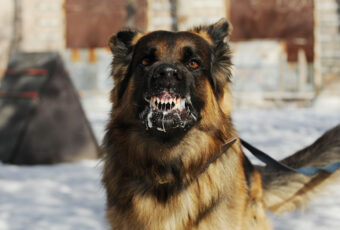Rabies in Dogs

Background
Rabies is a deadly infection caused by a virus that’s secreted in saliva and attacks a dog’s nervous system. In most cases, the virus is transmitted through a bite from an infected animal. It also may be transmitted through a scratch, or when the saliva comes into contact with the mouth, eyes, or nose.
Risk Factors
Unvaccinated dogs who spend time outdoors, especially around wild animals, are at the greatest risk for contracting rabies. Indoor pets are also at risk if they escape or an infected animal enters the home.
Signs
A dog infected with rabies may exhibit the following signs:
- Fearfulness
- Aggression
- Excessive drooling/foaming at the mouth
- Difficulty swallowing
- Confusion/disorientation
- Difficulty moving/paralysis
- Dilated pupils or vacant stare
- Abnormal behavior (i.e. a wild animal who does not shy away from people)
Diagnosis
Diagnosis in the United States is done using a post-mortem antibody test. This means that the test can only be performed on animals after they have died or been euthanized.
Treatment
If your dog has been bitten by a wild animal, contact your veterinarian immediately. If your dog is up to date on his rabies vaccine, your veterinarian will give an additional dose of the rabies vaccine and then quarantine your dog for 10 days.
Unfortunately, rabies is always fatal for unvaccinated animals, with death usually occurring within 7 to 10 days from when signs began.
Prevention
You can prevent rabies by having your dog vaccinated. In the United States, it is required by law that every owned dog be vaccinated against the rabies virus. Supervision of dogs when they are outside can reduce exposure to the virus.
Make an Appointment

Internal Medicine
AMC's board-certified specialists in Internal Medicine treat small animal pets in specialty areas, such as: endocrinology, gastroenterology, hematology, immune-mediated disease, infectious disease, nephrology, reproductive medicine, respiratory medicine, and more.
Learn More





























